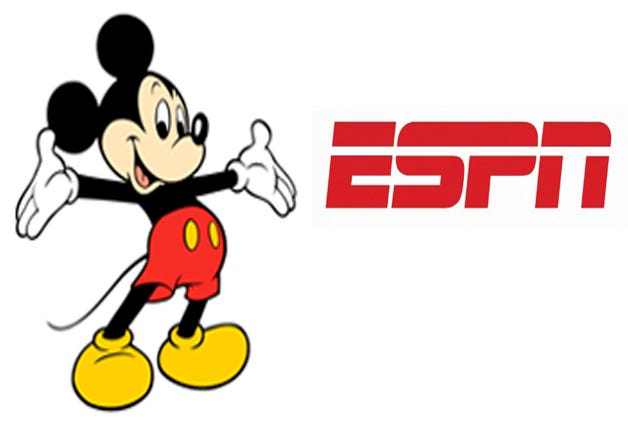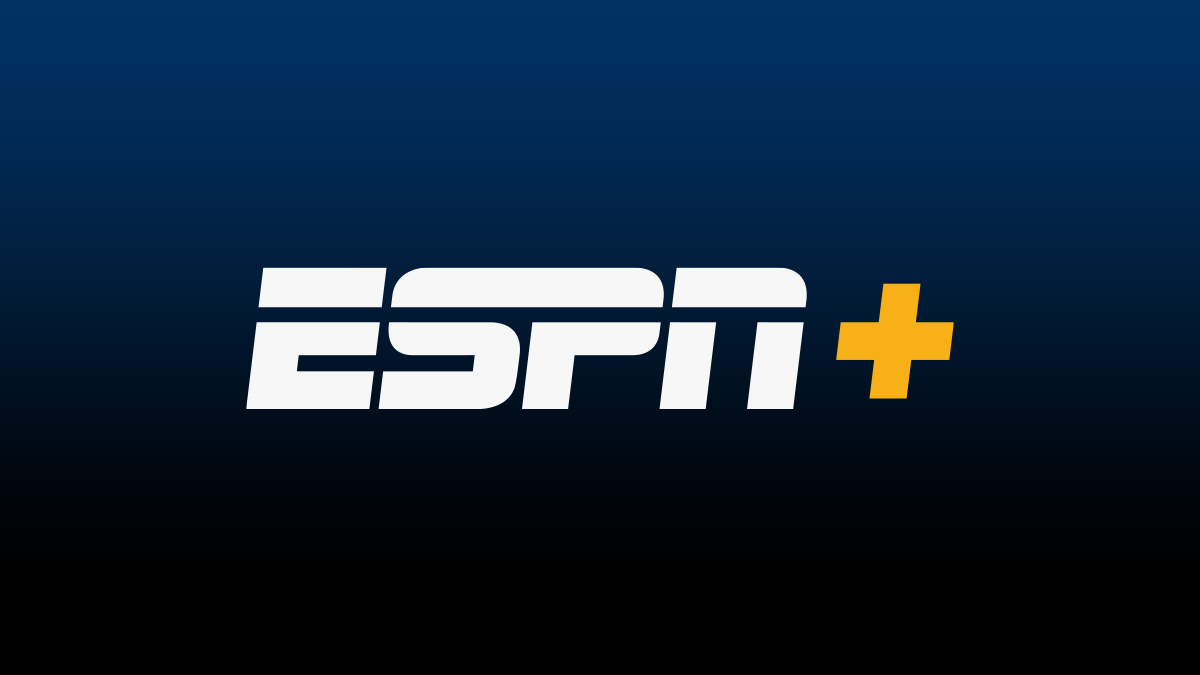In 1995, Disney acquired ABC and with it 80% of ESPN’s entire stake. It was a smart purchase. By 2008, Barron’s estimated that ESPN totaled approximately 40% of Disney’s entire revenue.
Before Star Wars, before Marvel, as newly minted CEO Bob Iger was beginning to think about owning the best IP in the world, and at a time when cable TV was still a mostly profitable business, ESPN was one of Disney’s most crucial businesses. People’s viewing habits are changing. Cable is no longer a guaranteed profitable business, and Disney’s restructured business is realigning emphasizing priorities toward a streaming future. Every hub is feeling the shift, but perhaps none as much as ESPN.
Disney and ESPN are considering selling off parts of the network’s business, notably the rights to the X Games series that ESPN has owned for 25 years, according to a new report from The Information. The sale comes as Disney and ESPN executives try to decide which businesses are essential to maintaining its cable TV audience or could be helpful in adding subscribers to its streaming service, ESPN+,” according to the report.
Or, in other words, Monday Night Football isn’t going anywhere but niche sports that don’t drive people to flip to ESPN or subscribe to ESPN+ are probably better off sold. That’s specially true in a world where niche streamers are looking for niche sports to help their smaller businesses with lower overhead cost and a more direct subscriber base. Disney wants to own rights that either boost ESPN viewership or drive additional subscriber ads to ESPN+.
Disney is targeting more than 15 million ESPN+ subscribers for fiscal 2021, I have learned. That’s about five million additional subscribers compared to where fiscal 2020 ended. At the same time, the company wants ESPN+ subscriber revenue (different from overall revenue) to double in 2021 compared to 2020, even if subscriber growth doesn’t grow 2x, I have also learned. That suggests higher ARPU per subscriber, and that comes from feeling pretty good about the type of content they’re moving to ESPN+ to drive revenue and subscriber growth.
At the heart of the push and pull over ESPN’s future is one simple sentiment: a large percentage of Disney’s business still comes from ESPN and other cable properties, but Disney’s future is in streaming — a business that still isn’t profitable for the House of Mouse. Even if Disney executives are feeling good about ESPN+ — despite recent frustration and negative press over the app flailing during UFC 257 — ESPN is still profitable. Of course, ESPN+ has faced its own growth struggles, adding an incremental number of subscribers until it started seeing real growth when bundled with Disney+ in 2019. Now, ESPN+ is growing steadily but it’s nowhere near a top streamer by any means. ESPN+ may be a bigger part of Disney’s future but it’s still not a replacement for ESPN.

A quick reminder of ESPN’s two main revenue streams: subscription revenue and advertising. For years, ESPN has remained one of the most expensive networks for cable carriers to purchase, so Disney could charge higher affiliate fees to carriers like Comcast, who then charges customers for cable packages that carry ESPN. ESPN is one of the most popular networks among men and as of 2020 reportedly reached more than 200 million viewers a month. In 2019, Disney’s media networks business saw more than $25 billion in revenue, surpassing Studios and DTCI (now Media and Entertainment). ESPN played a massive role in that revenue.
With rights to games from massively popular leagues, including the NFL (Monday Night Football) and the NBA, alongside other sports like racing and X Games, ESPN executives could point to the wealth of content and demand as a reason to keep fees high and advertisers coming. Over the last decade, things have changed. In another ESPN newsletter issue, I noted that ESPN peaked with over 100 million subscribers in 2011. Since then, subscribers have declined consistently and annually, dropping to 83 million subscribers by 2019.
Cord cutting isn’t a new phenomenon, but since the pandemic hit the world and decimated a number of businesses while accelerating others. For a long time, it seemed like sports and news were the main reason people kept their cable subscriptions. While news has remained a driver for subscribers over the last several months, thanks to a federal election and ongoing political controversies, sports have hit a steep decline — especially ESPN.
“For the first time we saw steep declines at ESPN, which could be chalked up to changes in the live sport schedule or perhaps something more sinister,” analyst Michael Nathanson wrote in a recent note, adding, “A lack of new original entertainment definitely impacted primetime viewing, but networks should be worried about the decline in key NFL and MLB primetime ratings.”
The pandemic’s impact on ESPN and network revenue in general can not be understated. Nathanson wrote that “nine of the top 20 networks fell by double-digits led by ESPN’s decline of -26% which was, no doubt, hurt by the cancellation of many sporting events.” While live news broadcasts saw a 7% increase in viewership year over year, sports, once a driver of live television viewing, saw an 18% decline. More importantly, Disney doesn’t know when that revenue will come back, or if it will. The company acknowledged in recent public documents that “COVID-19 impacts could also hasten the erosion of our historical sources of revenue at our Media Networks businesses.”
This comes after Disney executives spent some time during the company’s big investor day in December talking about integrating more of ESPN’s business into streaming platforms, like ESPN+ and Hulu. I expect more developments will be vaguely talked about later this week during the company’s first quarter earnings call. As Disney outlined in its public documents, “COVID-19 also makes it more challenging for management to estimate future performance of our businesses.”
ESPN has some problems facing its future, but it’s not about to become a total SVOD or AVOD play. Experimentation will happen. Some ESPN content is being offered to subscribers in Latin America via Star+, for example. In the US, Monday Night Football isn’t going to become an ESPN+ exclusive — but other NFL deals may. Disney is reportedly interested in buying NFL’s Sunday Ticket away from DirecTV, which would cost the company about $1.5 billion a year, The Information reports. Those games would apparently go on ESPN+. Is ESPN’s ARPU or subscriber numbers enough to cover that cost, even with advertising that may come with the game? No.
But this is the Mulan and soon-to-be Raya and the Last Dragon question — can it eventually become a meaningful part of the business if it’s the right title at the right time? These will never replace a billion dollar movie at the box office, but as Disney noted in its documents under potential risk factors, “Consumers may change their behavior and consumption patterns in response to the prolonged suspension of certain of our businesses, such as subscription to pay television packages (which have experienced accelerated decline during COVID-19) or theater-going to watch movies.”
In early 2020, Bob Iger told The Ringer’s Bill Simmons that “If you’re running a business in a dynamic world, and you try to maintain any kind of status quo, you will become irrelevant.” Hence, purchasing BAM Tech to launch Disney+ on and ending a $250 million licensing deal with Netflix. So far, that’s worked out better than expected for Disney. When it comes to sports, Iger specifically noted that ESPN at the time was still “delivering a fair amount of profitability to ESPN,” and ESPN+ was too small to switch everything over.
Monday Night Football can’t leave ESPN, but the Sunday Ticket can pick up some additional ESPN+ subscribers, and Disney can use other licensing to keep them there while figuring out what to do with ESPN and an aging out customer base. Disney+ will have exclusive PGA Tour Live rights in 2022, hoping that offering a different array of exclusive, popular niche sports will continue growing its base.
ESPN+’s place is still being figured out, but it’s Disney experimenting with what works and what doesn’t while racing against the clock. Nathanson pointed out that “linear TV ratings continue [to] shift to older and older viewers, with 65% of all cable network viewers now over the age of 50.” The share of cable viewership by people in the 50+ demographic have grown “1,900 basis points over the last five years,” according to Nathanson’s report, while share of viewership for people aged 2-17 and 18-49 have fallen 1,000 basis points in each demographic. Those with cable subscriptions, including ESPN packages, which remains profitable right now, are dwindling. Like Mulan and Raya, Disney can use Sunday Night Football to see what might happen next before ESPN totally runs out of time.
Things are ultimately and inevitably changing — Jimmy Pitaro is ESPN’s president, but he still reports to Kareem Daniel, the new head of Media and Entertainment at Disney, and CEO Bob Chapek. In the John Skipper era, the former head of ESPN didn’t need approval from others at Disney for licensing agreements, according to The Information. That’s no longer the case with Pitaro and his ESPN team. It’s not all gloom and doom for ESPN, not by a long shot. Just like every other part of Disney’s business, the goal is determining how to make sense of determining where premium content goes as aging distribution mediums become more of a concern in an accelerated moment.




Unless there's been some huge reorg announcement I missed, I think Pitaro, like the rest of the content engines at the company, still reports to Chapek. Daniel has inherited the distribution portion of the ESPN empire, which now reports up through Debra O'Connell.